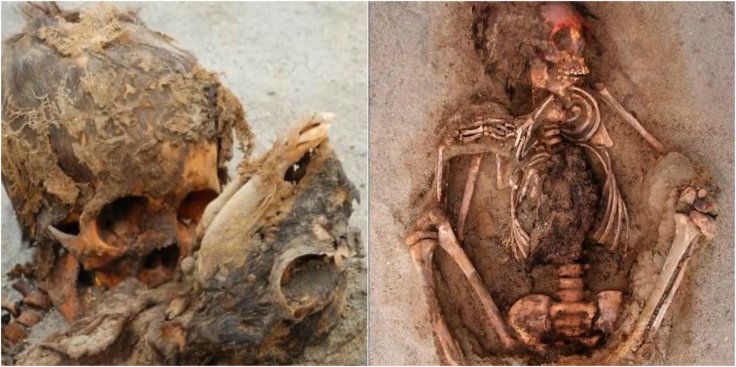
A group of archaeologists in the northern coast of Peru discovered the remains of more than 140 children, what appears to be the largest event of mass child sacrifice in world history. So what would be the reason behind the mass child sacrifice ritual?
Apart from the remains of 140 children, the archaeologists found 200 young llamas, who were sacrificed for an event that took place around 550 years ago, when the area was considered the residence of pre-Columbian Chimú civilization.
The Chimú culture arouses about 900 AD and known as the second-largest empire in Peru before the Spanish colonization, next to the Inca Empire, who was also known for the child sacrifice rituals.

The excavation started in 2011, when archaeologists accidentally found 42 children's skeletons at the site that is formerly known as Huanchaquito-Las Llamas, including remains of 76 llamas at a 3,500-year-old nearby temple.
After several years of excavation, researchers unearthed the mass child sacrifice area and came up with 140 sets of child remains and 200 baby llamas. Earlier the discovery in the Aztec capital of Tenochtitlán, today's Mexico City, where 42 children's bodies were found by the archaeologists, was known as the largest incident of mass child sacrifice.
The excavation was supported by the National Geographic Society and the investigations are being carried out by an international team, led by Gabriel Prieto of the Universidad Nacional de Trujillo and John Verano of Tulane University.

Even though the study on the recent discovery has not yet published, the researchers involved in the excavation explained their work in a National Geographic exclusive report. They said that all the children were aged between five and 14 at the time of death and the sacrifice ritual mainly have the majority of the children aged between eight and 12. In addition to that researchers said the llamas were all less than 18 months old during the alleged sacrifice.
As per the researchers, they found red stains, cinnabar-based pigment, in the skulls of those children and that became an evidence of sacrifice ritual, as the pigment was used in ceremonies. Archaeologists also said that there were cuts in sternum and rib bones of both the children and llamas. Such process suggested that the chests were cut open to remove the hearts.
The carbon-dating of nearby items, such as rope, put the time of death between 1400 and 1450, towards the end of the Chimú culture before they were conquered by the Inca Empire, which is known as the largest empire in pre-Columbian America.
While talking about the recent discovery, Verano said that he never expected what they have found and "I don't think anyone else would have, either."

Further research has revealed that there is a possibility of buying those children from a different region. In addition to it, Verano told Newsweek that the evidence of skull deformation arouses question on their origin.
While explaining the mystery behind the birthplace of those children, he also stated that "their heads were shaped in infancy as cultural identity markers, also their diet looks quite variable, as determined by stable isotopes of Carbon and Nitrogen."
After analysing the mud sample from sacrifice region, researchers have claimed that the incident took place during a period of serious flooding.
Now the researchers are trying to understand the motivation behind the large sacrifice ritual and the reason, why the children and baby llamas were put together.
Prieto told National Geographic, "When people hear about what happened and the scale of it, the first thing they always ask is 'why?' "









